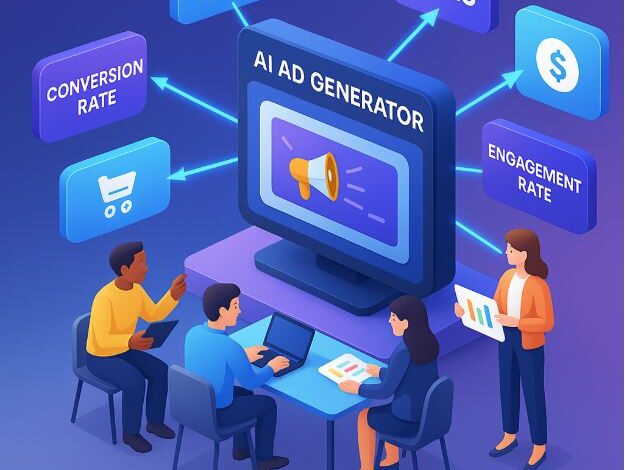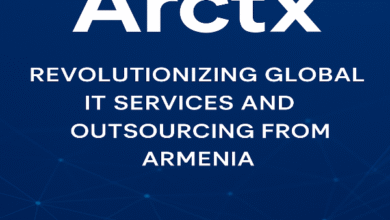What Is CTR and Why Has It Been Important

Okay, real talk — CTR is basically the ratio of clicks to impressions. You’ve probably seen this too; it’s been a cornerstone of digital marketing because it signals how many people are engaging with your ad.
Platforms like Google and Meta heavily weigh CTR as a quality signal, which helps your AI ad generator optimize placements and reduce cost per click.
Sounds familiar? CTR is still a valuable indicator that your ad is grabbing attention and relevant to your audience.
But wait, there’s more to the story — relying only on CTR when running AI ads generated via an AI advertising generator is like judging a movie by its trailer alone. It’s just a glimpse of the bigger picture.
The Limitations of CTR in Judging AI Ads
Here’s what nobody tells you: clicks don’t equal conversions or revenue. Ever felt that way when you see a great CTR but little to no sales? You’re not alone.
CTR only measures who clicked, but not what they did next. That’s a huge blind spot. AI ads made with AI ad creators or even a free AI ad generator might drive traffic, but if those visitors bounce immediately, what’s the point?
And guess what? Bots love clicking too. Digital ad fraud, powered by bot traffic using AI, inflates CTR, sometimes massively — expected to cost marketers over $100 billion globally this year. Sounds crazy, right?
Plus, your audience’s device, location, and behavior context are often ignored, even though they matter for AI ads optimizing for not just clicks but brand value and customer experience. So here’s a quick tip: don’t get hooked only on CTR numbers when your AI ads generator can provide deeper insights.
Data and Research Evidence Against Sole Reliance on CTR
Let’s take a step back and look at the facts. Nielsen’s 2012 study shocked the marketing world by showing almost no correlation between CTR and offline sales ROI — in some cases, campaigns optimized for CTR even saw negative returns.
Fast forward to today, and research echoes this. Industry data confirms that prioritizing CTR alone risks harming brand growth and long-term sales. And here’s the kicker — with AI ads created by the best AI advertising generators, many now incorporate metrics beyond clicks, understanding post-click conversions and brand lift.
So, if you’re like me, you want proof that your AI ad maker isn’t just generating clicks but actual business impact. Turns out, that proof lies beyond CTR.
What Should Marketers Measure Instead?
Here’s your move now: start focusing on what really matters — conversion rates, ROAS (Return on Ad Spend), and Customer Lifetime Value (CLV). Think about it this way: clicks are the start, but conversions are where you close the deal.
Using AI ads generator tools, you can track engagement metrics beyond CTR, such as time spent on the site, video views, and interactive behavior with rich media. Want to know the trick? Running brand lift studies or offline attribution analysis can reveal how your AI advertising really impacts brand awareness and foot traffic, things CTR simply can’t measure.
And guess what? Multi-touch attribution helps you follow your customer journey holistically — not just the first or last click.
Why AI Ads Need a Holistic Approach
Okay, real talk: AI ads aren’t just regular ads. They’re powered by dynamic targeting, machine learning, and omnichannel strategies. That means your evaluation methods need to be equally sophisticated.
If you rely only on CTR, you’re missing the full story. The best AI ad makers integrate multiple data points — from clicks to engagement, conversion rates, and brand perception. Ever felt that way trying to optimize AI campaigns? You’re not alone.
This holistic approach includes household transaction validation and cross-device tracking, providing real proof of ad effectiveness. So, here’s the kicker — combining CTR with these other metrics will put you ahead in mastering AI advertising.
FAQs
You might be wondering what others ask about CTR and AI ads. You’re not alone—here are some FAQs we often see:
Why is my CTR high but sales are low?
Chances are your ad is click-worthy but not conversion-worthy. This often happens when the ad creative is strong, but the landing page or offer doesn’t match the promise made in the ad.
Check for message mismatch, slow page load times, or poor user experience post-click. With AI ads, make sure your AI ad generator is set to optimize not just for clicks but for conversion actions like form fills, purchases, or demo bookings.
How do bots impact CTR measurement in AI ads?
Bots can artificially inflate your CTR by mimicking human clicks without any real intent to convert. This is especially common in programmatic ad networks. AI ad creators can include bot filtering mechanisms, but it’s still critical to cross-check your CTR with metrics like session duration, bounce rate, and conversion rate to identify anomalies.
What metrics should I prioritize besides CTR for AI ads created with an AI ad creator?
Here’s a quick list: Conversion Rate, ROAS (Return on Ad Spend), Customer Acquisition Cost (CAC), and Customer Lifetime Value (CLV). For AI ad campaigns, also consider engagement depth (e.g., scroll depth, video watch time), post-click actions, and assisted conversions from multi-touch attribution models.
Is a low CTR always bad for an AI-generated campaign?
Not necessarily. A low CTR with high conversion rate and ROAS can still be a win. Sometimes, a niche or highly targeted audience may not click as frequently, but when they do, they’re ready to buy. In these cases, low CTR just means your funnel is tighter and more qualified.
How can I properly track the effectiveness of AI ad generator outputs?
Start by tagging your AI-generated ads with UTM parameters and integrate your campaign data into platforms like GA4 or Mixpanel.
Use heatmaps, session recordings, and funnel analysis tools to study what users do after clicking. Run controlled A/B tests comparing human-written vs AI-generated ads and track downstream impact — not just click metrics.
Can CTR help with ad budget optimization when using an AI ad maker?
Yes, but only in context. High CTR ads may lower CPC in the short term, helping platforms like Meta or Google allocate more impressions. But always layer this with cost-per-conversion and ROAS. Your AI ad maker should be configured to optimize toward revenue metrics, not vanity metrics.
What’s the difference between CTR and CPC, and why does it matter?
CTR (Click-Through Rate) measures how many people clicked out of the total impressions. CPC (Cost Per Click) tells you how much each click is costing you. A high CTR with a high CPC may not be sustainable.
A low CTR with a low CPC might be acceptable if it drives ROI. Always pair these two together with conversion data to evaluate your campaign efficiency.
No judgment here—these questions are common and highlight what’s really important when working with AI ads.
So what does this mean for you?
Let that sink in: CTR is useful but insufficient to truly measure AI ads. You need to broaden the lens to include metrics that reflect real customer value and brand impact, especially when using powerful AI ad advertising generators.
Ready to try it? Start integrating a multi-metric framework today and watch your AI ads performance soar — way beyond those clicks.



